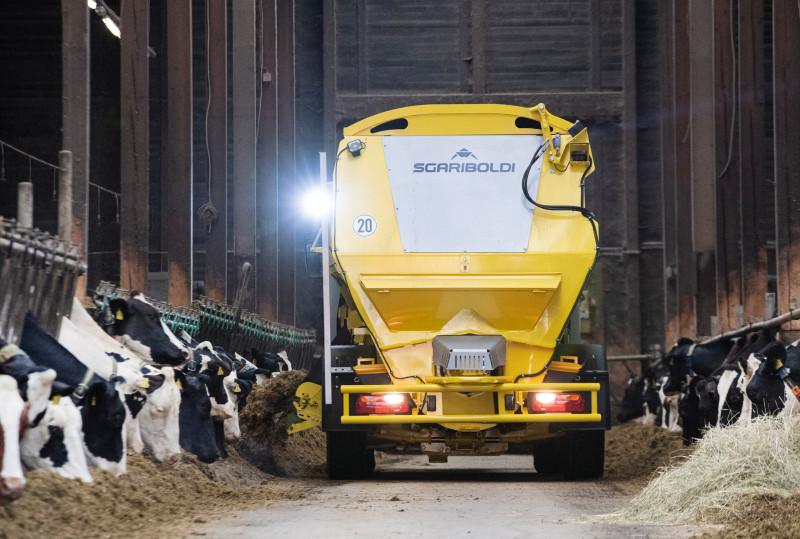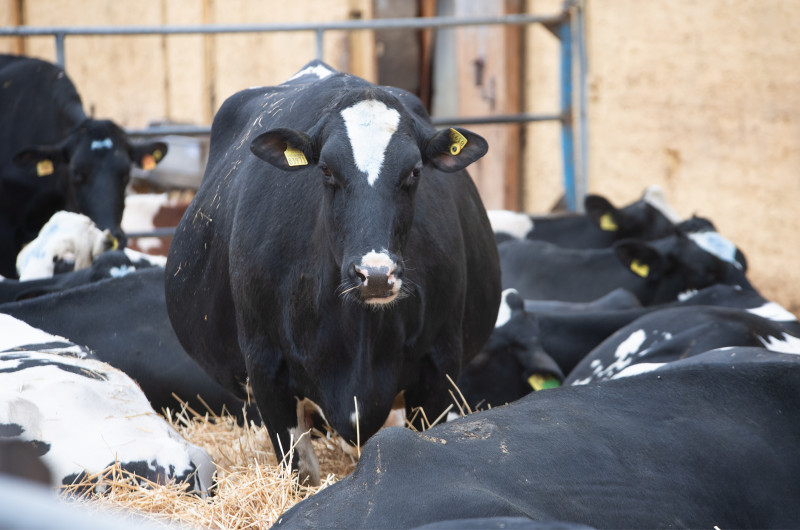
Today’s calf rearing lays the foundation for the cows that we will be milking in two years.
The calf is the cow of tomorrow and as such the future of the farm. Today’s calf rearing lays the foundation for the cows that we will be milking in two years. So, if we want to milk better cows in the future, then we need to start preparing them now.
JACQUES BERNARD, CHRISTINE MASSFELLER
One parameter the mirrors the profitability of a farm is the average production per day of life, and this is closely associated with calf rearing. Key factors in achieving a high average production per day of life are age at first calving, production capability and longevity. The foundation for these is optimal calf rearing with clear goals: vigorous calves and fast-growing calves! We will present two feeding concepts up to six months of age and want to emphasize that there is not one right concept. It is more so about finding the ideal concept for each individual farm and carrying out with diligence and passion; there are many roads that lead to Rome. We also want to give you insight into a management system that can help farms in various ways.
RIGHT COMBINATION
The company Hofmann Nutrition AG of Switzerland has compiled their experiences since 1978 and developed their own calf rearing concept: the Hokovit Super Heifer Method. Jürg Hofmann and his son Alexander are the owners of the company and the driving forces at Hokovit and they explain that the business has been concentrating on the use of micronutrients in feeding. The term “micronutrients” includes, for example, yeast and plant extracts, herbs and specific fatty acids. It primarily comes down to the right combination, as Jürg Hofmann explains: ‘The composition and further development of our combinations of natural micronutrients has cost us a lot of blood, sweat and tears over the years to ensure that they are visibly and measurably effective and increase the efficiency, health and production of animals. The manufacturing of the formulas is comparable to an orchestra: one violin alone does not make the music. The right combination with many other instruments makes the concert successful.’ Today, the company exports its micronutrient preparations to over 20 countries around the world and implements them specifically according to the needs of their clients.
IMPORTANT CORNERSTONES
The basis for the Hokovit Super Heifer Method from the company’s own brand meat program for Qualivo beef, in which the animals are fed hay, concentrate feed and micronutrients to achieve optimal meat quality. The health and average daily gain of the calves were so impressive that the concept was optimized and tailored to dairy breeds. The cornerstone for successful calf rearing is always the feeding of colostrum, which should happen as quickly as possible. ‘Many high producing cows do not have the desired colostrum quality, so our system aims to supplement the colostrum with our Calvicol. We also recommend Hokostar, a vitamin preparation, which divides the vitamins into very small fat droplets to be effective as fast as possible. Immunity and vigor are the most important things in the first phase of life!’ explains Jürg Hofmann. This is followed by a milk feeding program that lasts for nine weeks and targets a maximal rate of six litres per calf per day, so that each calf requires about 30kg of milk replacer. For solid feed the calves are offered a concentrate feed, which is manufactured according to a Hokovit recipe and contains the micronutrient complex Calvistart. This aims to optimize the microbiome in the gut and improve growth rate, feed efficiency and health. The concentrate feed and hay must be free choice up to six months of age. One option could be to mix the components with molasses in a dry TMR. In total, this requires about 480kg of concentrate and 200kg hay through the first six months of life. Despite limited milk feeding, an average live weight of 230kg is achieved by this age.
INTENSELY RESTRICTIVE
The internationally active feed supplier Sano has developed a calf rearing concept at their own research farm, the Sano Agricultural Institute in Hungary, which is presented by Dr. Norbert Göres and is easily transferable to other operations. Every calf receives its first colostrum within 2h of birth. The colostrum is supplemented with Cotosan Plus®. The fed amount is the equivalent of 10-12% of the liveweight of the calf. Dr. Göres recommends to clients that they also test the quality of the colostrum. The most suitable tool for this is a refractometer. A robust immune system is very important, as once the immune system is burdened it requires a lot of energy, which the calf is then not able to use for development. In Hungary good data was gathered from intensively restrictive feeding calves with up to 12 litres per calf per day. Another option could be feeding ad libitum through the first three weeks of life. According to Dr. Göres, each meal should not exceed 4 litres to ensure healthy digestion. At the Sano Agricultural Institute, calves are fed three times daily or through robotic feeders as of the second week of life in group housing. By now the decision has been made to extend the milk feeding phase to 14 weeks. This allows the calves more time for healthy rumen development. A deciding factor for health, fast growing calves is also the quality of the milk replacer. As such, in Hungary they use only Sanolac Startino® with 50% skim milk powder. When feeding through robotic feeders it is important to regularly verify the settings and calibration, as depending on the supplier it may change whether the powder amount is set per litre of feed or per litre of water.
AVOID SELECTION
A dry TMR has many benefits as a supplemental feed during the milk phase and as a primary feed during the weaning phase. This can be cost effectively formulated from chopped hay, molasses, concentrate feed and 7.5% Meggi® 10 Forte, a mineral and active ingredient combination with, among other ingredients, vitamins, live yeast and a special flavouring. ‘In addition to needs-based combination of nutrients, a calf TMR must also be highly palatable. This lays the foundation for proper rumen development and supports a low-stress weaning phase,’ explains Dr. Göres. Finally, an important tip from practical experience: ‘To avoid selection of the dry TMR, a few things should be watched during the mixing process. Intensive and as long as necessary, but as short as possible,’ is the motto. ‘Initially, the hay should be evenly mixed with molasses, so that it is sticky and coated. After that the mixing process should be paused before the rest of the dry ingredients are added and mixed in intensively at a higher RPM until a homogenous TMR is achieved. A common mistake in the field is to mix too long and the sticky effect of the molasses is lost.’
STANDARDIZATION
BoviSync is a platform whose mission is to simplify the operating procedures on dairy farms also to collected data and evaluate it. The data is collected in an app while the animal is being handled. ‘The idea of the BoviSync Mobile App is primarily to improve the efficiency of the farm and to standardize operational procedures,’ explains product manager Liz Binversie. For standardization, individual procedures are established which are visible through the app for the person working with the animal to carry out. The advantage of following the directions of the app step by step is that every person who cares for the animals carries out procedures in the same manner and that the same data is available from each animal. The system also simplifies the introduction of new employees. For example, after a calving data like calving ease, nave l infection and birth weight can be documented and afterwords there are protocols with instructions as to what should happen next with the animal (for example: feed colostrum). Going forward, further actions like the use of medications, weaning, weight gain, group or feed changes can be documented.
OPTIMIZE
The data can help identify weaknesses on farm and optimize them. ‘In a practical example we once had a case where repeatedly individual calves would get sick, and with the app we were able to identify that it was always those calves that had colostrum administered by a specific employee. So, the colostrum protocol was once more closely reviewed with this person,’ shares Binversie. With so many possibilities to gather data, a powerful evaluation system was required. A farm can create a number of reports themselves, or there are a large number of preloaded reports. As such, the reports compliment the goals set by BoviSync so that reports based on production data can help to increase the efficiency of the farm, or reports that target specific protocols can help simplify the operational procedures. Additionally, BoviSync offers interface possibilities with various other software systems which offers an additional layer of user friendliness.


